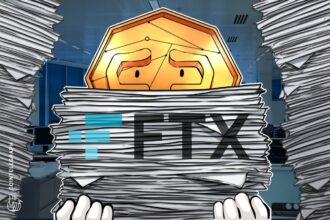Misconceptions About Bitcoin and Precious Metals ETFs: Kiyosaki vs. Expert Analysis
Financial educator Robert Kiyosaki has voiced concerns about the risks associated with holding Bitcoin (BTC) and precious metals indirectly through exchange-traded funds (ETFs). Kiyosaki highlighted the distinction between owning physical assets and holding “paper” versions, which may represent a claim on the asset rather than possession of it.
Kiyosaki’s Advisory on Bearer Assets
Kiyosaki, emphasizing preparedness against economic decline, previously advocated in May for moving away from “fake money,” including ETFs, towards tangible assets like physical gold, silver, and Bitcoin. He reiterated his stance, stating:
“An ETF is like having a picture of a gun for personal defense. Sometimes it’s best to have real gold, silver, Bitcoin, and a gun. Know the differences when it is best to have real and when it’s best to have paper.”
Kiyosaki implicitly underscores a fundamental risk: that paper instruments, including ETFs, could become worthless if the entity backing them encounters severe financial distress or runs out of liquid assets, potentially forcing investors into a sudden withdrawal crisis (a “bank run”).
The Underlying Risk of Paper Claims
Kiyosaki’s perspective touches upon a historical criticism of certain financial products, where institutions issue paper claims (like ETF shares or deposits)purportedly representing ownership but not *physical* asset necessarily.
This distinction raises concerns: if confidence in the custodian or issuer wanes significantly, simultaneous withdrawal attempts could strain institutions lacking immediate liquid assets beyond what is allocated to customers. This scenario, while extreme for most institutions, forms the basis of Kiyosaki’s caution.
Assessing ETF Security: The Bloomberg Analyst’s View
However, the security model for many traditional asset ETFs differs significantly from Kiyosaki’s implied analogy. Bloomberg ETF analyst Eric Balchunas, in a conversation with Cointelegraph, pointed out the robust safeguards:
“ETFs legally have to put the assets in with the custodian. So, all the shares of the ETF are connected to actual Bitcoin; it’s a one-for-one ratio, there is no paper”
Furthermore, Balchunas highlighted the maturity and integrity of the traditional ETF industry, operating a 30-year track record built on stringent practices like segregated custodianship between fund issuers and asset holders.
Crypto ETFs and Trust Considerations
Balchunas acknowledged the lingering trust differences between traditional finance (Wall Street) and the crypto world, a sentiment Kiyosaki likely resonates with.
Nevertheless, he posited that very structure makes ETFs a potentially safer format for Bitcoin ownership compared to self-custodying private keys, arguing that non-custodial holders might be more vulnerable to targeted cyberattacks (“wrench attacks”) or criminal ransom demands.











